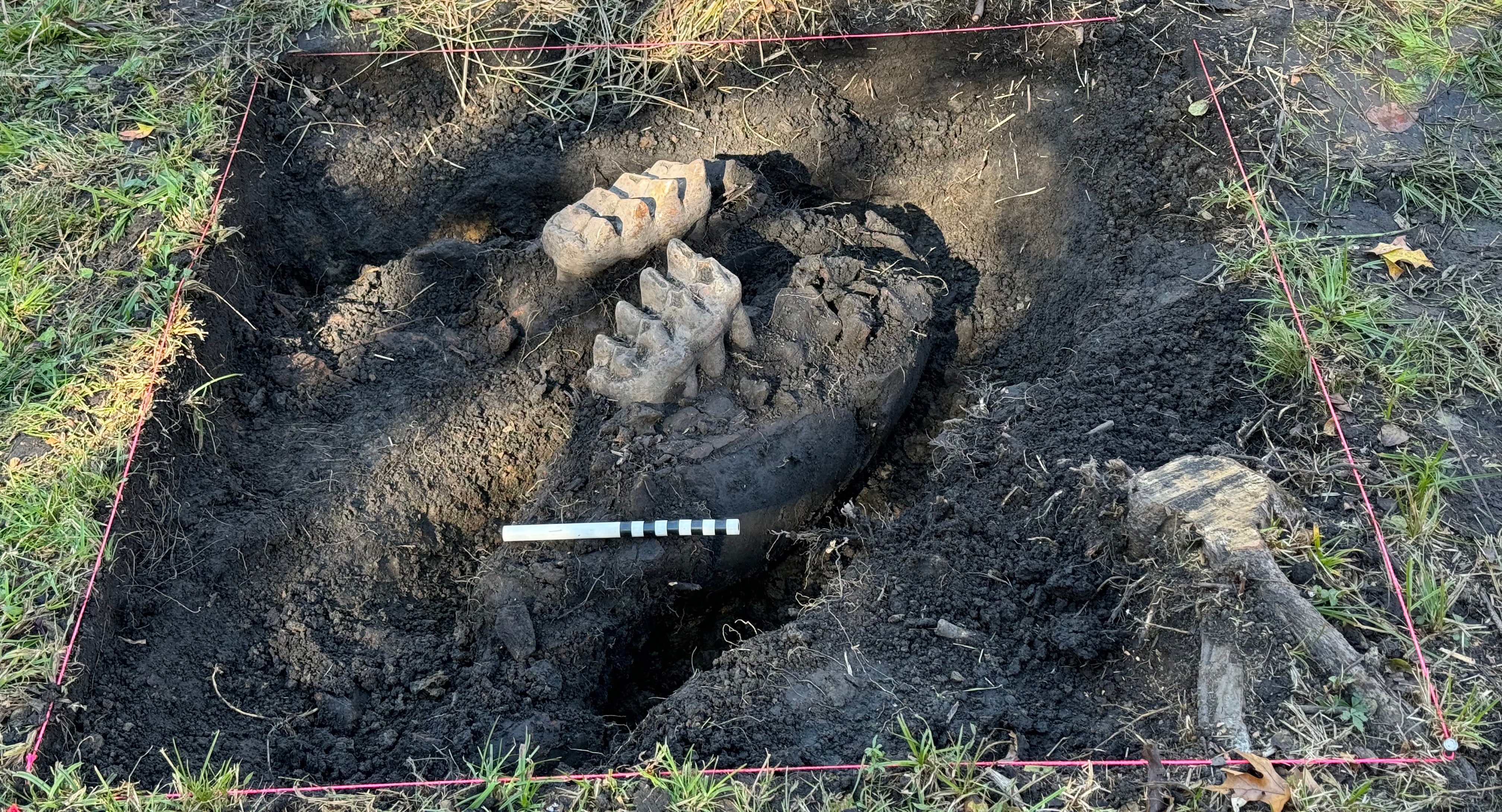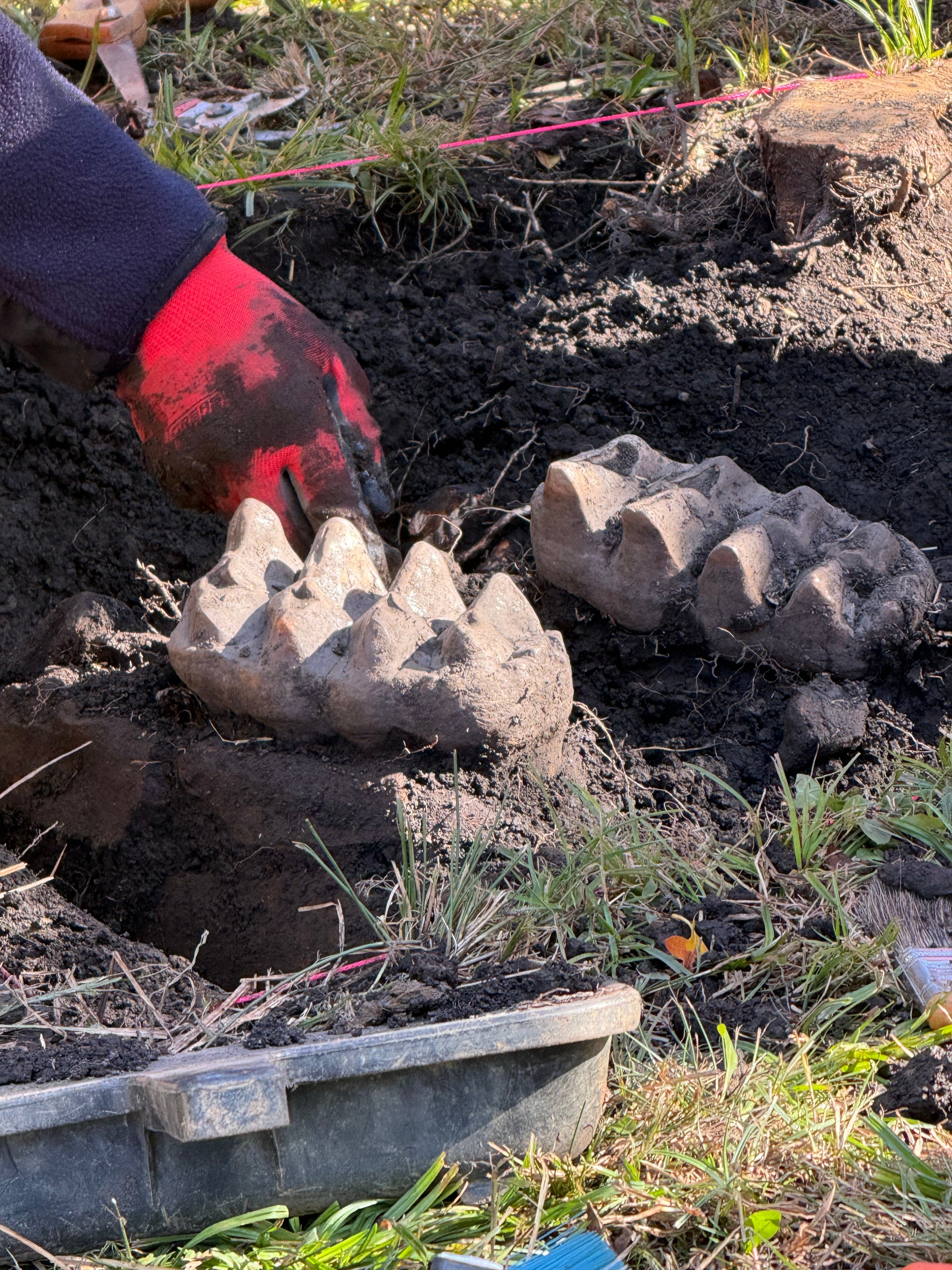New York homeowner makes groundbreaking prehistoric discovery – the first in over a decade
Jaw of a mastodons, the evolutionary cousins of woolly mammoths, found in backyard
Your support helps us to tell the story
From reproductive rights to climate change to Big Tech, The Independent is on the ground when the story is developing. Whether it's investigating the financials of Elon Musk's pro-Trump PAC or producing our latest documentary, 'The A Word', which shines a light on the American women fighting for reproductive rights, we know how important it is to parse out the facts from the messaging.
At such a critical moment in US history, we need reporters on the ground. Your donation allows us to keep sending journalists to speak to both sides of the story.
The Independent is trusted by Americans across the entire political spectrum. And unlike many other quality news outlets, we choose not to lock Americans out of our reporting and analysis with paywalls. We believe quality journalism should be available to everyone, paid for by those who can afford it.
Your support makes all the difference.A New York homeowner made a remarkable discovery in their backyard last September. The teeth from a complete mastodon jaw were peaking out of the soil.
The stunning find near the hamlet of Scotchtown is the first in the northeastern state in over a decade, according to scientists.
“When I found the teeth and examined them in my hands, I knew they were something special and decided to call in the experts,” the resident, who was not identified, said in a statement announcing the news. “I’m thrilled that our property has yielded such an important find for the scientific community.”
The jaw was found alongside bone fragments and later recovered by researchers from the New York State Museum and SUNY Orange.

The mastodon jaw belonged to an adult, officials said. There was also a piece of a toe bone and a rib fragment belonging to the evolutionary cousin of the woolly mammoth.
Both prehistoric mammals were extinct between 11,000 and 12,000 years ago, according to New York City’s American Museum of Natural History.
The fossils will be analyzed to help determine the creature’s age, dietary habits, and environment during its lifetime.

Archaeologists say that it will help to enhance the understanding of the region’s Ice Age inhabitants.
More than 150 mastodon fossils have been found around the state to date, with about a third in Orange County.
“While the jaw is the star of the show, the additional toe and rib fragments offer valuable context and the potential for additional research,” Dr. Cory Harris, the chair of SUNY Orange’s Behavioral Sciences Department, said in a statement. “We are also hoping to further explore the immediate area to see if there are any additional bones that were preserved.”

The excavation and study of the jaw are part of ongoing efforts to document and preserve New York’s history.
Scientists encourage the public to report any similar finds to the appropriate authorities.
“This mastodon jaw provides a unique opportunity to study the ecology of this magnificent species, which will enhance our understanding of the Ice Age ecosystems from this region,” Dr. Robert Feranec, the director of Research & Collections and curator of Ice Age Animals at the New York State Museum, said.
Join our commenting forum
Join thought-provoking conversations, follow other Independent readers and see their replies
0Comments